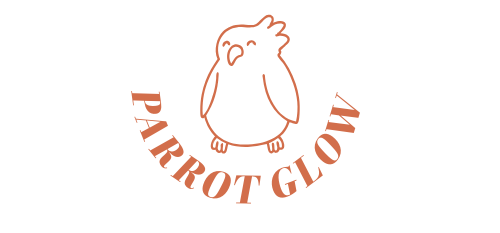Bringing a parrot into your home is an exciting and rewarding experience. These intelligent and vibrant birds quickly become a beloved part of the family. However, one of the most crucial steps to ensuring a happy and healthy parrot is creating the perfect cage environment. A well-designed cage setup provides not only safety and comfort but also the mental stimulation and physical space your bird needs to thrive.
In this comprehensive guide, we’ll walk you through everything you need to know to set up the ideal cage environment for your feathered friend.
1. Choosing the Right Cage Size and Shape
Parrots come in various sizes, and so should their cages. A general rule of thumb is: the larger the cage, the better. Your parrot should have ample room to stretch its wings fully, climb, and play.
- Small parrots (e.g., Budgies, Lovebirds): Minimum 18x18x24 inches
- Medium parrots (e.g., African Greys, Amazons): Minimum 24x36x48 inches
- Large parrots (e.g., Macaws, Cockatoos): Minimum 36x48x60 inches
Choose a rectangular cage over a round one, as round cages can disorient birds and restrict their movement. Horizontal bars are preferable for climbing, and the spacing should be appropriate to prevent escape or injury.
2. Placement Matters
Where you place the cage in your home significantly affects your parrot’s well-being. Parrots are social creatures and enjoy being near the action, but they also need a sense of security.
- Avoid drafty areas or direct sunlight
- Place the cage at eye level to promote bonding and reduce stress
- Avoid kitchens due to harmful fumes (like Teflon)
- Quiet corners in busy rooms like the living room or family room are ideal
3. Cage Accessories and Furnishings
Creating an enriching cage setup involves more than just food and water bowls. Here’s what you’ll need:
- Perches: Offer a variety of textures (natural wood, rope, plastic) and diameters to exercise foot muscles.
- Toys: Parrots are incredibly intelligent and need toys to stay stimulated. Rotate toys weekly to maintain interest.
- Food and Water Dishes: Securely attached bowls that are easy to clean and refill.
- Ladders and Swings: Great for exercise and play.
- Foraging Toys: Hide treats in puzzles to encourage natural behaviors.
Avoid placing all items at the bottom; parrots prefer elevated spots. However, ensure they can access everything easily.
4. Cleanliness is Key
A clean cage is essential to your parrot’s health. Dirty cages can lead to bacterial infections, respiratory issues, and overall stress.
- Daily: Replace food and water, spot clean droppings
- Weekly: Change cage liner, wash dishes, wipe surfaces
- Monthly: Deep clean the entire cage with bird-safe disinfectant
Make cleaning part of your routine to prevent buildup and make your bird’s space always comfortable.
5. Lighting and Sleep
Parrots need a consistent day-night cycle. Natural light is best, but avoid direct sun exposure. Consider using full-spectrum lighting to simulate natural daylight indoors.
For sleep, parrots need about 10–12 hours of quiet, dark time. Cover the cage with a breathable cover at night or place the cage in a room where they can rest undisturbed.
6. Temperature and Humidity
Most parrots are comfortable in temperatures between 65–80°F (18–27°C). Sudden drops or rises in temperature can be harmful.
- Avoid air vents and open windows
- Use a humidifier if your home is dry, especially in winter
- Watch for signs of discomfort like fluffed feathers or open-mouth breathing
7. Social Interaction and Out-of-Cage Time
No matter how perfect the cage setup is, parrots also need daily out-of-cage time and interaction. Birds are highly social and can develop emotional issues if left alone for too long.
Spend time talking, playing, and bonding with your parrot each day. Provide a play stand or bird-safe space outside the cage for supervised exercise.
8. Safety Precautions
Birds are curious and can get into trouble if precautions aren’t taken.
- Ensure all cage doors and latches are secure
- Avoid toys with sharp edges or loose strings
- Do not use sandpaper perches or galvanized metal (zinc toxicity)
- Keep toxic plants and household chemicals far from the cage
Conclusion
Setting up the ideal cage environment for your parrot is one of the most important things you can do to ensure a long, healthy, and happy life for your bird. A thoughtful setup promotes physical health, mental stimulation, and emotional well-being.
Remember, your parrot’s cage is not just a place to live—it’s their world. Make it safe, stimulating, and full of love.
For more tips on parrot care, visit our blog at ParrotGlow.com or reach out with any questions—we’re always happy to help fellow bird lovers!


